Full Disclosure: ScreenAnarchy's Lists of Shame - January (Part 2)
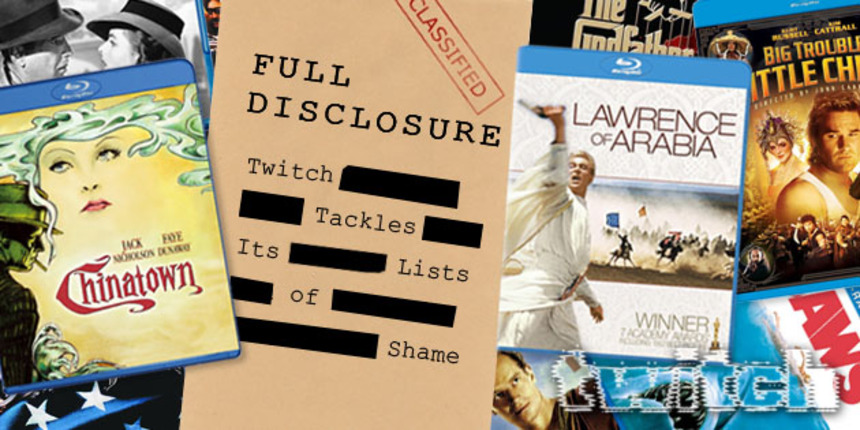
You can find the first part of this month's list here, and the project's formal introduction right here.
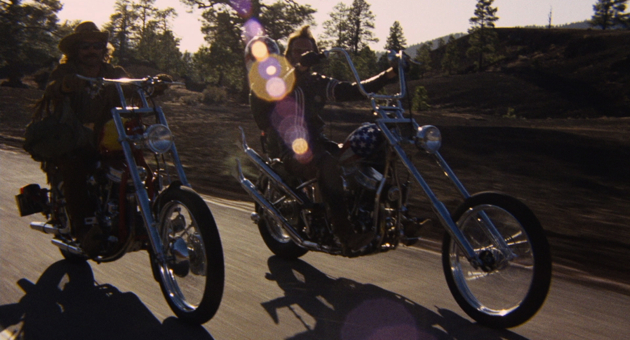
Easy Rider (dir. Dennis Hopper, 1969, USA)
Winner of "Best First Work" at Cannes Film Festival, nominated for 2 Academy Awards
I've long been aware of Easy Rider's place in the cannon of American cinema, how it captured the cultural shift at the end of the 60s, played a key role in ushering in the "New Hollywood" movement, and, if you want to get cynical, proved the counter-culture to be a viable movie market. These are all things mentioned when people talk about Easy Rider, but in my experience, they say very little about the film itself. Now that I've finally seen it, I think I understand why.
While it's certainly an amiable enough movie with nice scenery, time has not been kind to the film's laid-back, hippie Americana vibe. The incessant montages of Hopper and Fonda cruising through pretty landscapes play like goofy parodies now, and become interminable after the second or third time. The same goes for the hippie commune and the campfire scene where Peter Fonda teaches Jack Nicholson how to smoke weed. In fact, most of the nonsense stoner conversations dragged pretty badly. Points for realism though, I suppose.
Then there's the film's unhappy ending, which conceptually works pretty well, casting what came before in a different light. If I remember anything from Easy Rider in a year, besides I Wasn't Born to Follow still being a good song, it will be the near-perfect scene the night before the bikers meet their tragic end, when Peter Fonda delivers the legendary line, "We blew it." Here, for a moment, I actually felt all of the conflict, possibility and menace that the film was working so hard to impart. But, regarding the scene that follows: why on earth does Fonda drive his motorcycle towards the van that just shot his friend when he goes for help?
Admittedly, there were other moments I appreciated too. The opening drug deal sequence that affords Wyatt and Billy the bread to cut loose is a shining example of direct, no-nonsense visual storytelling without any fat or unnecessary gloss. Also, Jack Nicholson injects the film with a jolt of life when he appears as the alcoholic, good-natured attorney. Finally, I really liked editor Donn Cambern's flash cut transitions, as well as the editing of the graveyard acid trip.
Ultimately though, Easy Rider only functioned for me as a slightly interesting cultural artifact, rather than an actual film. I get it - history is written by the victors, and Easy Rider was a huge surprise hit. Thus it's now remembered as the quintessential American counter-culture road movie, and probably generates considerable nostalgia for some. But history be damned. There were other amazing, existential road movies about the disintegration of the American Dream that are still brilliant today. Two-Lane Blacktop and Electra-glide in Blue may not have captured the hearts of a generation, but are just as bold and affecting today as when they were first released. Alas, I can't say the same for Easy Rider.
Dennis Hopper's rambling, doomed road trip movie is a return to the time when enlightened men wore neckerchiefs. How did counterculture types and squares take this collection of music-set montages broken up by occasional encounters with folks living along Billy (Hopper) and Wyatt's (Peter Fonda) L.A. to New Orleans motorcycle ride? I have what might be called a "hippie problem", which has kept me from watching Easy Rider in spite of its so-called importance. It's spending a lot of time with a bunch of feeling-not-thinking types that's a major drag, this grasping for something outside of the conventional life as a mishmash of spiritualism, naturism, and dope. But it was fascinating to see that Easy Rider wasn't about that (not quite).
Fonda and Hopper are in many ways the young, hairier incarnations of their screen personas I grew up watching: Billy's the eccentric paranoiac while Wyatt is the picture of zen, laid-back cool, opposite sides of the counterculture coin at the time. Wyatt's content to be in the moment while Billy's always a little angry, always waiting for something to happen. Jack Nicholson's ACLU lawyer, George, is half-in/half-out of the square, middle class world and the whole freewheeling hippie scene just for laughs. That it all goes sideways for all three upends what I'd always suspected for years would be some sentimentalized look at the drop outs, heads, and free thinkers of the late 60s.
Getting past how loose the movie is (again, with the montages), it's sad in a way that resonates, yearning for some kind of adventure across a country that's as apt to welcome you with open arms as beat you to death in the night for the length of your hair.
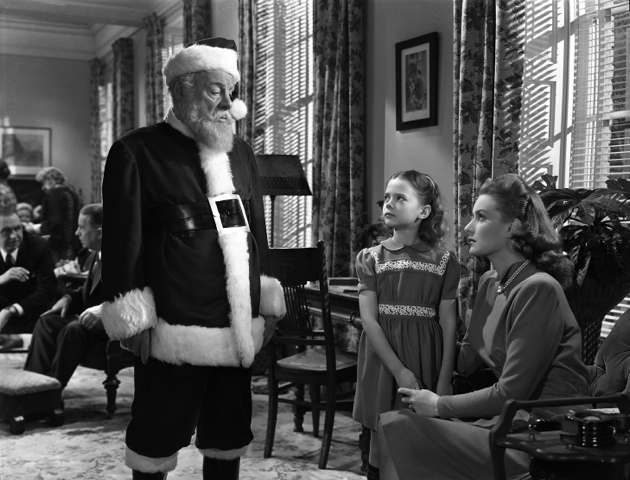
Miracle on 34th Street (dir.George Seaton, 1947 USA)
Winner of 3 Academy Awards, including Best Supporting Actor and Best Writing, Screenplay
This is one of those movies that it feels like everyone has seen. It's on TV every Christmas and has been for decades, after all. As someone who can't remember ever believing in Santa Claus, and who has never gone in for the saccharine-sweet, overly sentimental hallmark-type fare, I never bothered watching this movie, assuming it was just more of that drivel.
I was pleasantly surprised however, to find that Miracle on 34th Street is actually a really lovely film that is full of multi-sided pessimistic views on the over-commercialization of Christmas. Instead of offering a cheesy simple story, there is actually a lot more nuance than I expected. Makes me almost wish I believed in Santa after all.
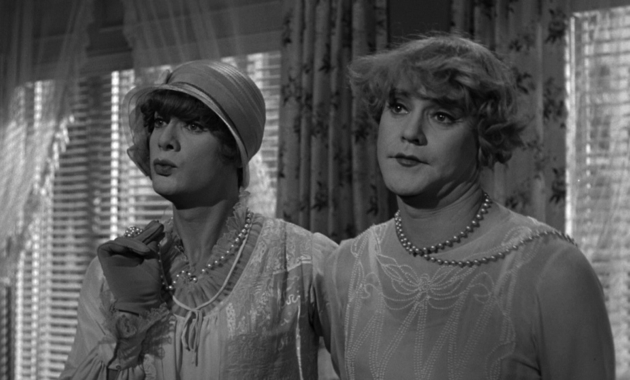
Some Like It Hot (dir. Billy Wilder, 1959 USA)
Winner of Best Costume Design Academy Award, nominated for 5 more, including Best Director and Best Actor. Winner 3 Golden Globes, including Best Picture - Comedy
When reputable institutions say Some Like It Hot is the greatest American Comedy Film of all time, well, you just have to see for yourself if they are correct.
I've never been drawn to Marilyn Monroe as a sex symbol - I'm more of an Audrey Hepburn man myself- but I will admit that I was drawn to Marilyn's shapely form in this film. When you compare her to rake-thin actresses today she would be a behemoth, but damn if she doesn't look just the soft side of fantastic in this film. And while I understand there is a certain appeal to seeing Marilyn on screen, I picked this film because of her leading men.
The respect I had for Tony Curtis and Jack Lemmon as comedic actors wasn't founded so much on the number of their films I had watched as much as their implied iconic status. Having seen only a handful of their other comedic offerings I already had a sense of what they were capable of pulling off on screen, and their roles in this film lived up to every expectation and more.
The screenplay by Billy Wilder and I.A.L. Diamond is pretty amazing. I've watched Some Like It Hot twice this month; the second time around I watched it with the subtitles on just to see the how much of this terrific script I missed the first time. But it wasn't just the wordplay. Of course when you have men dressing up as women there has to be fantastic physical comedy as well.
I'm familiar with men dressing as women for comedic effect ever since I watched Mrs. Premise pine about spending "four hours burying the cat". And darn it if I couldn't help but think about Heath Ledger dressed as a nurse in The Dark Knight when I looked at Jack Lemmon getting a little frantic as Daphne during the sleeper car scene with the girls.
It is a shame that I instantly made that mental connection and was not able just to experience Lemmon as a woman for that first time...(really!?) untainted by more current viewing experiences. But there was just something about his physicality in that moment. I could switch it off the second time and appreciate Lemmon's genius he brought to the role; the way his face drops, the dancing scene with Joe E. Brown and running around the hotel in heels. All great moments of comedy.
While I don't know if Some Like It Hot is the 'greatest' American comedy it is certainly one of the best I have seen. Of course this means I am just going to have to dig deeper now into the Billy Wilder canon of film.
I wish more modern filmmakers (outside of the Coens and David O' Russell) would play in the screwball comedy sandbox with the degree of success and creativity of Billy Wilder (and his heroes, Lubitsch and Sturges.) Here he allows Tony Curtis and Jack Lemmon to play several characters, in and out of drag, while dropping in a simple, yet delightfully convoluted plot featuring a number of memorable scenes.
He lightly indulges in a period setting, 1929, pokes fun at Capone (here, George Raft's memorable Spatz Colombo) and highlights just how ineffective prohibition was...all in the first 15 minutes. Enter a pair of womanizing, down on their luck jazz musicians, who are run from their gig without pay, only to witness a gangland massacre moments later. Now on the run from the mob, they are forced to flee Chicago and head for Florida, hiding out, in drag, in an all-girls band, fronted by boozy, floozy (and busty) Marilyn Monroe.
Some Like It Hot frequently appears on 'Best of' film polls, where it is often the highest ranked comedy. So yeah, it was an oversight happily corrected by yours truly. What was revelatory to me is just how much character Tony Curtis manages to squeeze out. Playing essentially three 'roles' in the film, the womanizer, the prudish-scaredy-gal in drag, and the rich sexually dysfunctional bachelor, Curtis manages to seduce Monroe by telling her he is incapable of being aroused by a woman, thus allowing Monroe's ditsy character to, ahem, really work for it. It should be noted that Wilder has a go at Monroe in the way he photographs her, always emphasizing her body (popping out in a number of unzipped cocktail dresses), while de-emphasizing her brain.
The famous ending is wrong in all the wrong ways, and the film is remarkable in how it gets Jack Lemmon's Daphne to more or less subsume his personality, pining (honestly) to be a 'kept' woman. This puts it almost into romantic comedy mode (outside the bedroom antics), whereas the collection of despicable people doing despicable things to each other is actually quite charming under Wilder's direction.
This is in sharp contrast to the modern state of the genre, which so often depicts mean people doing cruel & stupid things to one another in place of genuine creative or entertainment value. Only in the screwball comedy could this level of brash sexism leave a warm grin on your face, even in 2012. Joe E. Brown's aging horndog, who is famously nonplussed about his 'prey' changing genders, was maybe aware of it all along and even more excited about things...
Looking at Wilder's filmography, I'd never make the crass statement that 1959 was a more innocent time, as Wilder was a challenging and incisive filmmaker as ever there was, even when fooling around. Some Like it Hot is rather self-deprecating (and falsely modest) when it declares, "Nobody's Perfect!" (this epitaph is notably and boldy engraved onto Wilder's headstone...)
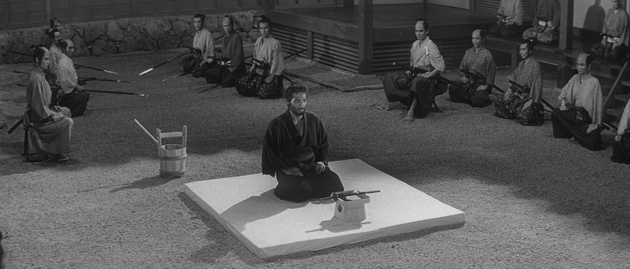
Harakiri (dir. Kobayashi Masaki, 1962 Japan)
Winner of Jury Grand Prize at Cannes Film Festival, two Blue Ribbon Awards, including Best Actor
The first time I noticed Kobayashi Masaki's film Harakiri was just after I had seen his wonderful Kwaidan, which had blown me away with its multi-colored beauty. Then, three things happened to bring this title to my attention. First, Miike Takashi decided to remake it after his hugely successful 13 Assassins. Second, the bamboo-sword kill featured in the ScreenAnarchy Top Kills. And third, Masters of Cinema released the title on Blu-ray. I bought that edition and wanted to watch it the very day it arrived, but before I knew it, Harakiri had become part of the dreaded to-watch pile once more.
But now we have the Lists of Shame, and this was one I just HAD to put on it! I finally watched it this week and these are my thoughts.
Harakiri takes place during the 17th century, when Japan entered a time of peace and most samurai suddenly found themselves jobless. These people had to roam the land as ronin, looking for employment. Tsugumo is one of these destitute men. One day he knocks on the door of Lord Iyi's estate, requesting to end his own life in an honorable manner by committing seppuku, the ritual suicide ceremony of the samurai. Thinking he is trying to extort them for charity, Lord Iyi's retainers then recount the story of the last samurai who had a similar request, and who ended up being forced to commit suicide. Despite this harrowing tale, Tsugumo is adamant that he wishes to proceed. During the ceremony it is revealed that Tsugumo has one or two things to say about samurai honor, and may even have an axe to grind.
Kobayashi Masaki made Harakiri more than fifty years ago, but this is one of those films that is more or less timeless. Its story is simple but masterfully told and keeps you on the edge of your seat. Notice that the plot description above only covers the first quarter of the film, as I would not wish to spoil anything else. Any overt theatricality is soon forgotten and the black and white photography is often stunning, even by today's standards. With this film, Kobyashi didn't just challenge the popular concept of the impeccable samurai with their codes of honor. Instead he completely destroyed it by putting a humanist filter on it, ironically put forward in the film by a perfect samurai.
Funnily enough, Harakiri makes an excellent companion piece to last year's Scabbard Samurai, which showed pity and humanism in a Lord and his retainers, only to find true samurai honor in the weirdest of places. Both films are excellent in that they keep you on the wrong footing and both leave you mildly devastated.
In short: I loved Harakiri and I think its position in movie history is an earned one. I can only hope I will enjoy the other films on my list of shame just as much.
"What?!?? You've never seen Harakiri?!?!?" That statement has been leveled at me exactly never, which makes my initial entry for this Lists of Shame exercise slightly anti-climatic, despite the film being widely considered a must-see by every passionate cinephile. But if this is what it takes to finally crack open that Criterion blu-ray, so be it.
In close proximity to watching Harakiri, I also viewed director Pete Travis' Dredd, a sci-fi/action comic book adaptation with seemingly little relevance here. Surprisingly, both films deal directly with a systemic hierarchy of zero-tolerance adherence to the law. In Dredd, the titular protagonist is a neo-fascistic server of such darkly blind justice, whereas Harakiri features a hero bent on exposing such a structure. Dredd's justice may not be completely blind, but he does wear one strange helmet. In Harakiri, the helmet of the law is part of an ornamental, empty suit of armor - an ominous reminder of hollow justice. That both films end up with a related conclusion (Harakiri's statement being far more powerful) made this coincidental double feature all the more advantageous. I love it when movies start talking to each other. Especially the unlikely ones.
Although Kobayashi Masaki utilizes the outward tropes of an honor-fueled samurai swordplay actioner, Harakiri brazenly subverts expectations. There is a cool sword fight (shot beautifully in a windswept grassy field) and the film ends with a showdown, but it's all motivated by the filmmaker's spirit of protest against Japan's long traditions and oppression. Kobayashi (who also made the epic The Human Condition, and other morally charged films) is clearly reeling from his experience as a serviceman in WWII, which, according to Joan Mellen's essay, he described as "the culmination of human evil." Once again, we see that WWII is the key historical flashpoint for all of cinema.
Conversely, those familiar with the domestic dramas typical of Shochiku studios (home of Ozu), are liable to have expectations thwarted. Early on, amid a court of dead-eyed onlookers, a young, desperate ronin is made to perform ritual suicide with a dull blade. What follows is pure excruciation, a prolonged bloody death worthy of torture horror. Later, as Nakadai Tatsuya's character arrives at the same court, his slowly revealed agenda informs us of the tragic circumstances that led the young ronin to his conclusion.
Kobayashi forces our gaze in vital, challenging ways. Harakiri, with its rich monochrome palette, is beautiful. As Dredd surprises many with its DVD & blu-ray sales, Harakiri demonstrates that such law-driven systems are far from new, and such filmic treatments can be far more poignant. Central to this relevance is that contemporary boundary pusher Miike Takashi followed his feudal masterpiece 13 Assassins with a well-received remake of Harakiri. Perhaps this is the wrong choice of words, but I'm honored to have finally experienced Harakiri, a film that cuts sharply (even if every sword in the film does not).
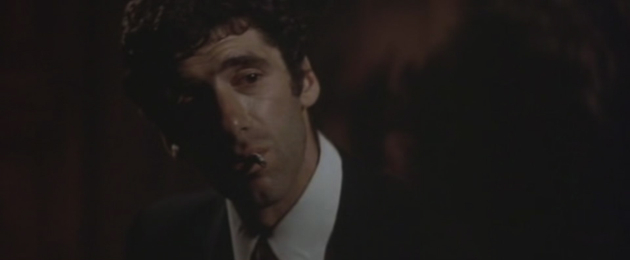
The Long Goodbye (dir. Robert Altman, 1973 USA)
Winner Best Cinematography, National Society of Film Critics Awards
As a character from The Long Goodbye would say, "It's a minor crime to kill your wife. The major crime is that he stole my money. Your friend stole my money, and the penalty for that is capital punishment." The general idea seems to be we must be careful not to exclude anyone in the Land of the Free, especially the poor bastard stuck paying the bill, even if he's a Bastard with a capital B. Free love, free enterprise, free to be you and me, all are players here, metaphorical stand-ins for, among other things, Hollywood in its post-studio decline and LA in the seventies.
Elliot Gould's Marlowe saunters through this film, supposedly outdated ideas of right and wrong in tow. But the brilliance is in what Robert Altman suggests through his 'matter of fact, wandering through LA' approach to the story, mainly, that a lot of things just don't need judging. Ironically The Long Goodbye itself may be the best example of why. On release it faltered, largely due to marketing, emerging decades later as a bona fide seventies masterpiece of social satire and neo-noir updating.
The film's moral point of view has also aged well, opening with Marlowe's cat waking him up, demanding to be fed, only to leave when offered cheap cat food inside an empty can of its preferred brand. We sympathize with Marlowe. Instead of lashing out, he just laughs quietly and moves on. He can't change the cat after all.
The cat is a good metaphor. Everyone in this movie wants to be fed and Marlowe just doesn't have what they want or need. There's the version of his old friend Terry we see at the beginning, alive and kicking and wanting a free ride to Mexico. There's the hood who wants his money back that Terry may have stolen. There's the cops who want to forget the case once they find Terry dead in his south of heaven hotel room. The rest of the melange includes has-been alcoholic writers and their abused wives, quack head-shrinkers, and finally an ending for Terry's story, that for better or worse ends with rest in peace.
The only ones who seem to get exactly what they want in the show are the perpetually naked girls next door. Into yoga, hash brownies and their own navels, they are untroubled by the rest of the world, specifically because we never see them in it. Marlowe isn't so lucky. He's in the middle of a sick parade. "It's alright with me" is this Marlowe's oft-used tag-line to end encounters and leave himself free to move on. But what he's moving towards was truth, a truth he needed, an idea of some justice, some balance. Pretty damn Zen in the land of illusion, if you ask me.
I've never warmed all that much to Robert Altman's oeuvre. His free-form approach and fondness for naturalistic overlapping dialogue has always had a soporific effect on me. My first encounter was Nashville, whilst still at University, which I remember as being about seven hours of country singers talking about nothing in particular - like eavesdropping on some incredibly dull and irrelevant conversation at a party you didn't want to go to in the first place. And wasn't there a political angle there somewhere? Who knows, I simply remember boredom.
Yet, despite this scarring experience, I've always had an uncanny desire to check out The Long Goodbye. Perhaps because, though not an expert on Chandler by any stretch, I enjoy a good hard-boiled detective flick as much as the next man. The DVD sleeve has a cool image on the front too: a black-suited Eliot Gould insouciantly walking towards us across a Malibu beach, cigarette in mouth (back when cigarettes were cool), gun in hand, waves crashing behind him. Who IS this guy?!
The Long Goodbye turns out to be a quasi-parodic neo-noir thriller, which subverts genre conventions whilst somehow still gripping as a familiar whodunit. The inherent discipline required for the plot to make narrative sense seems to have reigned in Altman's dalliances somewhat, even if it bears little resemblance to Raymond Chandler's source novel. It's still talky and still harbours many of the auteur's more irritating modes of representation, but it's also damn funny. Somehow those irritants bothered me less this time, and for every dreamy slow zoom to a fuzzy background, there's a laconic wisecrack that lifts it all.
Gould is superb, playing it just the right side of parody as the perma-smoking, "It's ok with me" - quipping P.I. Philip Marlowe. From the off, Altman makes no bones about how far he's willing to push the affectionate mockery of the genre. Our hero spends the first 15mins of the movie placating his hungry cat. It's about as far from Hawk's The Big Sleep as you can get. The deftly handled plot manages to remain a true puzzle until the climactic scenes, at which point the penny alarmingly drops for both Marlowe and us. We've been led up the garden path in the most entertaining of ways.
An early appearance by Arnold Schwarzenegger and that marvellous title song, interpreted ad-nauseam by all and sundry, lend a wonderful off-kilter vibe. This being Hollywood New Wave, there are moments of sudden, alarming violence; principally when Marty Augustine takes an empty Coke bottle to his girlfriend's face. It's an unsettling sucker-punch that comes from nowhere and reinforces that, comic or not, this certainly isn't a comedy.
I'm buoyed by this movie, and glad that after well over a decade, I've finally given Altman another chance. I'm also now intent on revisiting some of his other earlier works. Maybe I've grown more patient. Maybe I'll even take another look at Nashville.
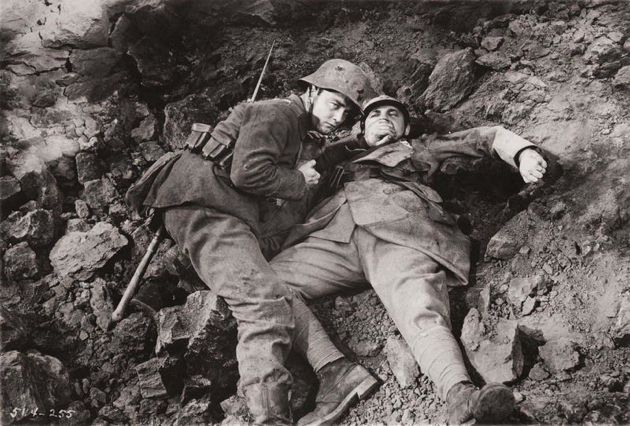
All Quiet On The Western Front (dir. Lewis Milestone, 1930 USA)
Winner of two Academy Awards, including Best Picture and Best Director, and nominated for two others
The dramatic effect All Quiet on the Western Front must have had when first released is immediately obvious. The overtly anti-war message is shocking even eight decades on. An opening title card announces its intentions, stating that "this story is neither an accusation nor a confession, and least of all an adventure", and that it is trying "to tell of a generation of men who, even though they may have escaped its shells, were destroyed by the war".
The fact that this film documents the "War to end all wars" from the perspective of a member of the German infantry, was released the same year the first member of the Nazi party was elected, and one day after Hitler's 41st birthday, makes it an incredibly interesting time capsule of inter-war Cinema.
The film is also notable for its unique production technique - using two cameras simultaneously to shoot both a Talkie and a Silent for different markets. While it's easy to find the broad, theatrical elements from the silent era shaping much of the film (thus dating it quite a bit), I was astonished at some of the modern-looking shots, and how effectively sound was used. The booming of artillery fire and other background noises create a magnificent sense of dread.
The film's effect on some of my favourite films, like Saving Private Ryan and Paths of Glory, are overt, but there are a number of shots that inform almost every War film that has followed it. Recently restored, complete with a supremely nihilistic ending, the film reminds us of the harsh reality of the battlefield, where the young are sacrificed at the whim of the old. I was reminded of the line from Lawrence of Arabia that echoes this sentiment, and innumerable other films that may have presented it in more poetic or subtle ways, each owing a debt to this remarkable work.
For this modern viewer, once the story leaves the trenches things get heavy handed indeed. Dreary exposition and overt metaphors are paraded one-by-one, with the basic thrust of the narrative telegraphed in what seems now a blatant fashion. Some performances seem manic and overwrought, lacking the genuine sense of ennui that other latter works like Apocalypse Now managed to present. This isn't to judge the film by modern tastes, merely to admit that a good chunk hasn't aged quite as well.
Still, it's an undeniably important work, not just as a progenitor or historical artefact. When two men share a moment of death together in a bomb crater, referring to each other as "Comrade" without any sense of political irony, you know this is an American film from another age. Yet by presenting such a powerful expression of comradeship-in-arms, by demonstrating explicitly both the banality and horror of war, All Quiet on the Western Front proves to still speak loudly as to our modern age almost a century on.
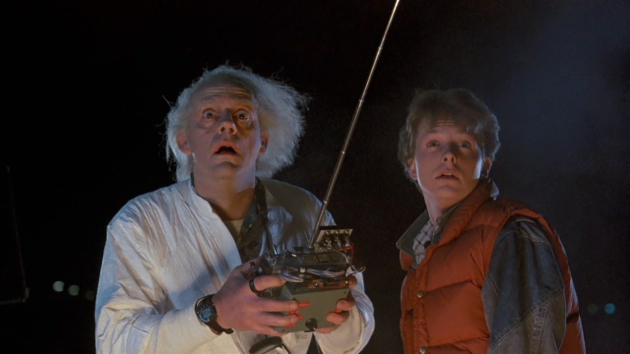
Back To The Future (dir. Robert Zemeckis, 1985 USA)
Winner of Best Sound Effects Editing Academy Award, and nominated for three others, including Best Original Screenplay
Having now seen Back To The Future, I find it absurd that I hadn't somehow viewed this easily accessible classic. I think it hearkens back to the days of VHS ratings advice ads and the awful fake family crowded around the television. In the ad, there was a scene from the third film in this mega blockbuster franchise, where a cowboy calls Marty a 'duded-up, egg-sucking gutter trash' and the dad blocks the kids' ears because the film is PG (parental guidance) rated. This commercial reeked of lameness and basically turned me off the franchise completely, until now!
Going into the first film, all I knew of it were some potential paradoxes that have been parodied countless times, particularly the school dance scene, which taken out of context had meant nothing to me. After watching the film, I continued with the rest of the trilogy, and if my list of shame included the ancillary other two films, I would probably rate the experience as fun and entertaining enough. The second film in particular felt almost entirely unnecessary but it's a given that the general rule of trilogies is that they degrade as the franchise begins to wear thin. Without a doubt, the first film in the series is the best, but considering it outside of its trilogy framework, I can honestly say that Back to the Future is a standalone masterpiece in its own right. The screenplay is almost perfect and everyone is on top form, particularly Crispin Glover as Marty's manic father, George.
Somehow Back To The Future manages to be complex with the time travel angle and the inevitable back and forth of the inherent issues there, but also a very sweet and immediate teenage love story. No frame is wasted and the plight of Marty and his parents is effortlessly told. However, despite the energy involved, Back to the Future is an incredibly dark parable of fate and the family unit, as well as a commentary on society both in the excess of the 80s and the ignorance of the late 50s. The beauty of Back to the Future is reading this much into it, and yet enjoying it in any context with family or friends. Truly a masterful work from an excellent filmmaker and one of the best films from the 1980s that I have seen.
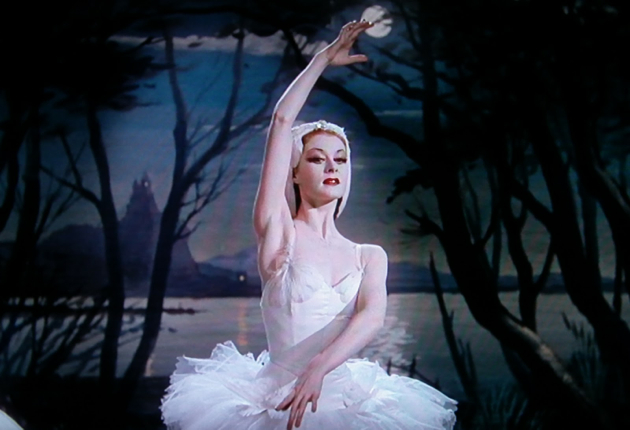
The Red Shoes (dir. Michael Powell/Emeric Pressburger, 1948 UK)
Winner of two Academy Awards, including Best Music and Best Art Direction, nominated for three others including Best Picture
The Red Shoes is one of those films, a classic for the fans of classics, but largely incapable of reaching out to a broader audience. Even though I believe I'm quite aware of what film fans in general consider to be "essential" films, I hadn't heard about The Red Shoes before I set out on this adventure. I did know the director duo Powell and Pressburger though, (Black Narcissus and Peeping Tom both crossed my radar at some point, though I never got around to seeing them), so I was quite interested to see if they could live up to their name.
Not sure what to expect I basically sat down believing I was going to see a typical 40s musical. My girlfriend is a pretty big Gene Kelly fan and there aren't too many of his musical endeavors that I haven't seen yet, but The Red Shoes is a very different beast altogether. It ditches the happy-go-lucky atmosphere that runs rampant in Kelly's musicals, instead providing a more serious, artistic and dramatic background.
After seeing the film, it's not too difficult to imagine how The Red Shoes has buried itself deep in the bowels of classic film critics' appreciation lists, unable to cross over to more contemporary film fans. The film relies heavily on ballet scenes (the 15-minute performance in the middle is hard to ignore) and the drama surrounding them is performed in that same overly theatrical fashion, leaving little room for human emotions.
Powell and Pressburger dish out a pretty typical life vs art story, but the characters are flat, dramatic events come suddenly and without much motivation and the main dilemma of the film doesn't really convince. The Red Shoes is not so much about unbearable hardships, instead it feels like a case of childish pride standing in the way of a happier life.
I can't say I was very impressed with it. Stilted acting and dialogue, a strong focus on ballet and a romance that never felt like there was any warmth whatsoever. Between this and Kelly's catalogue, I'd choose Kelly every time.
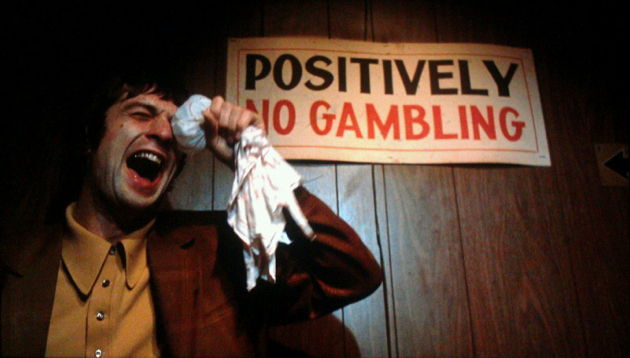
Mean Streets (dir. Martin Scorsese, 1973 USA)
Winner of Best Supporting Actor at National Society of Film Critics Awards, nominated for Best Drama at Writers Guild of America Awards
Martin Scorsese is a hallowed name not only for cinephiles, but also the general film-loving public. Although I appreciate that he is a great filmmaker, I've never been particularly drawn to his films. I think that has mainly been because of the subject matter: his characters and stories inhabit worlds that hold little interest for me. Again, no denying his greatness, but there are certain filmmakers with whom I don't gel. So I've only seen maybe a half-dozen of his films, but knew that I should see more, especially of his early work. I think you could argue that this film is what put Scorsese, and his stars Harvey Keitel and Robert De Niro, on the map. And it's easy to see that it's from this film that our perceptions of all three, and the work they do, has emerged, and continues to type them to a certain extent, for better or worse. Scorsese's name is synonymous with the American Independent Cinema of the 1970s, and so I went into my viewing of Mean Streets with an open mind.
I have always associated Scorsese with gritty realism, as a real American-style director, but what surprised me the most is how influenced the film is by European Auteur Cinema (and probably I shouldn't have been surprised, but that is the point of this exercise.) I saw shades of the French New Wave, Italian Neo-Realism and even a bit of Giallo in certain scenes, surrealism at certain points, and the grittiness and improvised nature of some of the dialogue. I love both Keitel and De Niro's entrances: Keitel, with the reverse body mount shot, as though we were drunkenly wandering around the bar with him, and De Niro, in a shot that today would be considered cliché, slow-motion with two girls on his arm to a Rolling Stones song. Certainly I can see how Scorsese not only found his influences, but how he influenced a generation.
Raging Bull is on my list of shame as well, so I will get more exposure to this first part of what I would call Scorsese's three part career. I'm still not sure to what degree the subject matter of these early films interests me, but I can say that my appreciation for him has grown.

Do you feel this content is inappropriate or infringes upon your rights? Click here to report it, or see our DMCA policy.






